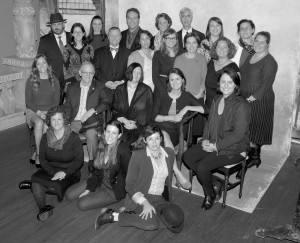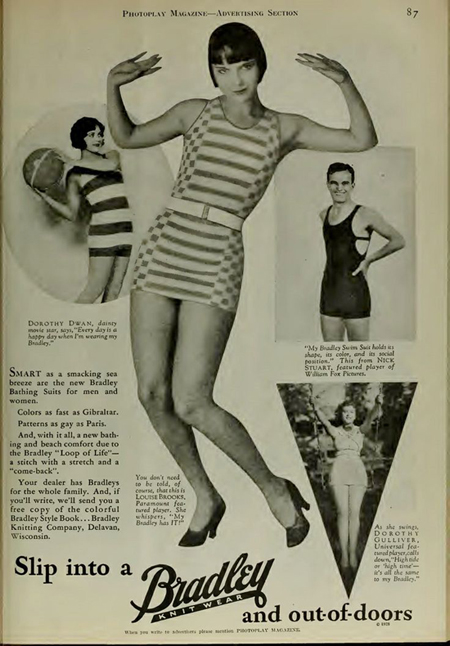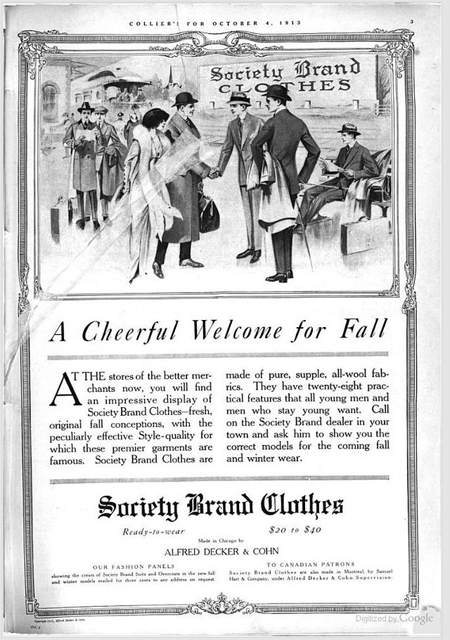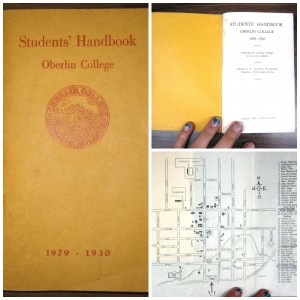My SHA Experience
Wednesday, December 3rd, 2014By Liz Schultz, Museum Education and Tour Coordinator
I wish to thank the staff, board, and supporters of the Oberlin Heritage Center for encouraging and supporting my participation in the three week workshop “Developing History Leaders @ Seminar for Historic Administration,” which ran from November 1 to November 22, 2014 in Indianapolis. Organized by the American Association for State and Local History, “SHA” is widely regarded as an exceptional training experience for individuals in the history museum field. For me, the experience was both informative and inspirational. I returned to the Heritage Center with a better understanding of the wider history museum field, the Heritage Center’s capacity to have a meaningful impact on individuals and the community at large, and my own abilities and responsibilities within the organization.
SHA Class of 2014
There were twenty-one participants in the seminar who came from varied history institutions, large and small, independent and government supported. It was a unique opportunity for me to share ideas and discuss challenges among peers. Daily morning and afternoon sessions were led by over 30 visiting leaders in the field, including CEOs of museums and managers of national organizations, such as the National Trust for Historic Preservation and the National Council on Public History. It was amazing to meet so many passionate, experienced leaders. To a person, they were approachable and more than willing to answer questions and teach from their own past successes and failures.
The sessions were varied and intense. I include a quick list, although it does not do justice to the depth of our discussions:
Week 1: History Relevance Campaign, Changing Demography of America and Museum Visitation, Technology Trends, Models of Leadership, Strategic Thinking and Managing Change, Object-Based Experiences
Week 2: Exhibitions and Community, Fundraising and Boards, Earned Revenue and Entrepreneurship, Advocacy, Evaluation, Live Interpretation
Week 3: Engaging Communities, Financial Sustainability, Leadership & Followership, International Coalition of Sites of Conscience, Historic Preservation, Service to the Field
As much as I learned from the classroom sessions, I have to admit that the occasional evening dinners with the speakers and the few field trips we took were a welcome change of pace. (After all, I do work in an informal education setting). Either through the seminar or on our own time, I visited the Indiana Historical Society, Indiana State Museum, Eiteljorg Museum of American Indians and Western Art, Indiana Children’s Museum, Indiana Landmarks, Indiana Medical History Museum, Indiana War Memorial, and Conner Prairie Interactive History Park’s Follow the North Star UGRR program. (Okay, I also visited the Indianapolis Motor Speedway.)
I came back with Powerpoint copies, journal articles, and a notebook full of notes, but what I really came back with is less obvious. I return with new understanding gained from the materials, talking with peers, and discussing multiple case studies. My professional network increased exponentially and I now know that whatever challenge I am facing, someone out there has the know-how to help out. I have color-coded lists of ideas – things I need to do, things I would like to see the Heritage Center try, ways I can improve my work habits and project planning, and lists of books I should read.
I also returned with a new frame of mind. I particularly enjoyed our sessions discussing the necessity of organizational flexibility and change, balancing different leadership strengths, and the need to step back and look at larger goals. I think it was great that I was able to participate in this just as the Heritage Center prepares to review its five-year strategic plan and launch into development of a new plan. I especially hope to weave in my new thinking about reaching new audiences and re-examining our interpretive goals and what exactly we want visitors to leave with.
The experience also gave me new perspective on the impact of historical organizations, and the Heritage Center in particular. There were many moments I was able to think to myself, “Ha! We’re already doing that.” Of course we’re not supposed to rest on our laurels, but it was still very encouraging knowing that we are already an organization that plans for long-term stability, tries new projects, realizes the importance of professional development, collaborates with community partners, shares significant stories, strives to be transparent, and is driven by community-minded, caring people.
Thank you to everyone who supported my participation in this program, whether through financial support, allowing me work time to go, taking on my daily duties, supervising projects, and leading tours in my absence.
I hope you are all able to attend my public program on December 17, 2014 (7:15 p.m., at Kendal at Oberlin) about my SHA experience and highlights of what I learned. I also had the opportunity to be a guest blogger during the SHA experience and you can read my post, “Ready for Change,” as well as other posts about the seminar.


















